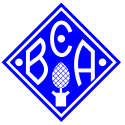BC Augsburg
 |
|
| Full name | Ballspiel-Club Augsburg |
|---|---|
| Founded | 8 August 1907 |
| Ground | Rosenaustadion |
| Capacity | 28,000 |
| League | defunct |
BC Augsburg was a German football club based in Augsburg, Bavaria. The team was founded as Fußball-Club Allemannia Augsburg in 1907 and played as Ballspiel-Club Augsburg from 1921 to 1969. Facing imminent financial collapse, BC merged with the football side of TSV Schwaben Augsburg in July 1969 to form FC Augsburg. The union was short-lived and Schwaben re-established its own football department the following year. FCA remains active today and carries on the tradition of the original side.
On 11 May 1909, BC joined the gymnastics club Turnverein 1871 Oberhausen as that association's football department, based in the suburb of Oberhausen. Oberhausen merged with Turnverein Augsburg II to create Turn- und Sportverein 1871 Augsburg with the footballers playing as Ballspielclub im TSV 1847. A year later the footballers went their own way as a separate club and first adopted the name BC Augsburg.
In the 1930s the club shared unions with Sportverein Augsburg and Turn- und Sportverein Stadtbach. SV was established in 1888 as Turnverein Augsburg-Kriegshaber. A football department was formed within that club in 1916, became independent in 1924, and joined BC in 1935. TSV was formed in 1896 as Turnverein Stadtbach and its footballers went their own way as Fußball-Club Stadtbach in August 1919. In 1930 they were renamed VfL Teutonia Augsburg and on 15 June 1932 the association was joined by the athletics department of BC Augsburg. Two years later VfL rejoined its parent club to create TSV 1896 Stadtbach, which in its turn became part of BC in 1938.
German football was reorganized in 1933 under the Third Reich into 16 top-flight divisions known as Gauligen. BC finished second in regional second division that following year and beat FC Memmingen 3:2 in a promotion playoff to win its way into the Gauliga Bayern for the 1934–35 season. Over the next several seasons they played there as a lower to mid-table side with their best results coming as second places finishes in 1940 and 1943. During this period the team made two appearances (1935, 1943) in play for the Tschammer-Pokal, predecessor of today's DFB-Pokal (German Cup), and were put out in the early going on both occasions.
...
Wikipedia
